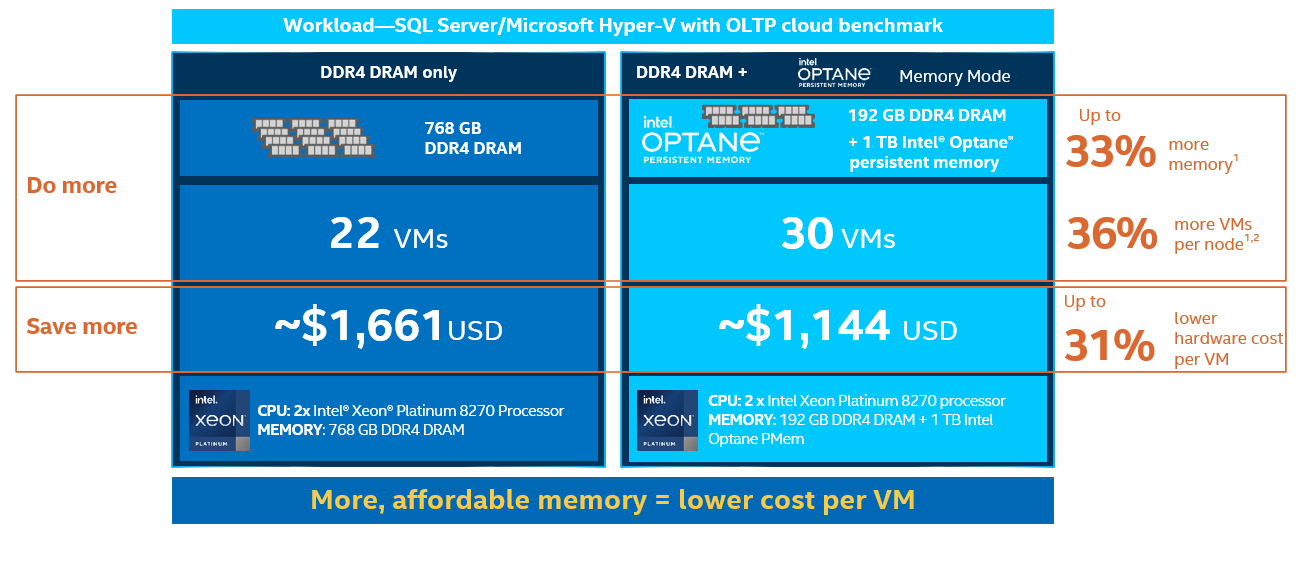1 Performance results are based on testing as of 1/31/2019 and may not reflect all publicly available security updates. For more complete information about performance and benchmark results, visit www.intel.com/benchmarks. Configuration: See SQL Server/Hyper V-Multi-Tenant Virtualization config slide

Value Proposition
- Increase the number of database instances supported on more VMs per node and reduce data center footprint while maintaining the customer SLA
- Increase database instances density 1.3 to 2x per node1
- Effectively using all system resources, like CPU, memory, and storage, by increasing memory capacity on lower than required memory-constrained systems
- Higher memory capacities will increase the number of large database memory per node
Solutions
- Increase memory capacity using Optane™ persistent memory to reduce memory-subsystem cost for multitenant virtualized database customers
- Helps in increasing memory per server to help with large database sizes
Customer pain points:
- Number of VMs running databases, and large VMs per server, are rapidly growing
- Need to increase the number of VM database instances per node
- Need to handle large VMs
- DRAM can be cost-prohibitive for higher-memory subsystems
Partner with Intel and enable SMB customers to accomplish more while staying in budget with Intel® Optane™ persistent memory (PMem). Discover how Optane™ PMem works with Microsoft SQL Servers to deliver more memory and more VMs per node for a price your customers will value.
More memory at a more affordable cost
Microsoft SQL Server Multitenant Virtualization


